Portable Induction Cooker Reviews, Use Guide, Tips, Recipes
Single element portable induction cookers have become available that can be plugged into a wall socket, anywhere. They are cheap, easy to use, easy to clean, and very safe and efficient to use as only the pot gets hot.
Portable induction cookers can be used in many places that are unsuitable for gas and standard electric cooktops. They can be added to kitchens that already have stoves for various purposes such as stir-frying.
They are also suitable for apartments and flats that have minimal cooking facilities, perhaps restricted to a microwave oven.
This article explains how induction cookers work, what to look for when buying one and the merits and disadvantages of portable induction cookers.
It also provides a guide and tips for using portable induction cookers and hobs for various purposes and several great recipes to try to learn about the process of induction cooking and its advantages.
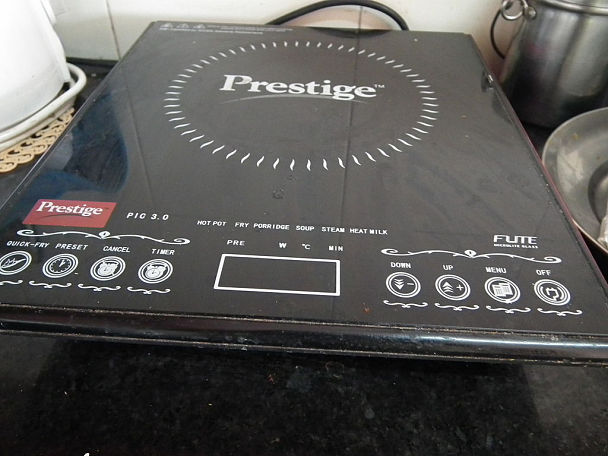
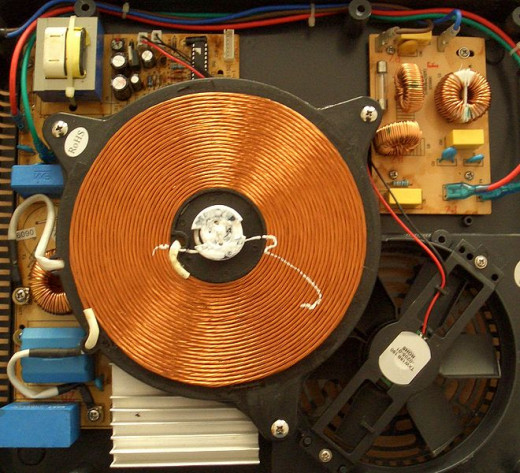
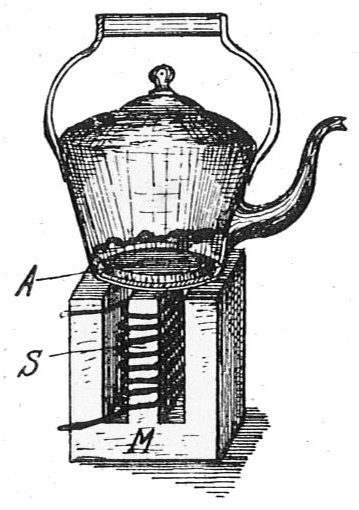
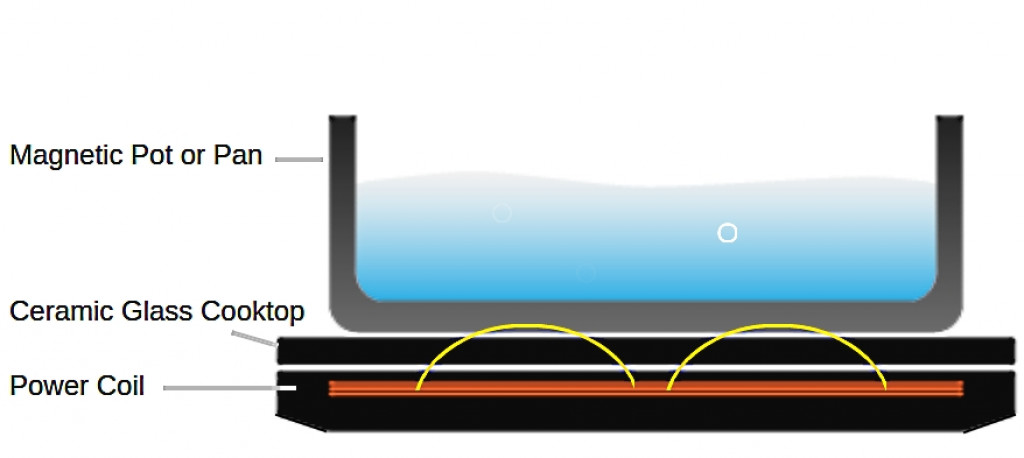
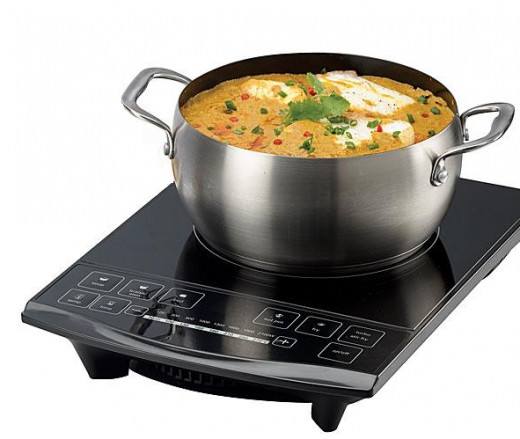
Benefits of Portable Induction Cookers
- Induction cookers heat much more rapidly than conventional gas or electric stovetops
- They are much more efficient with up to 95% of the electrical energy being converted to heat.
- There is no radiant heat or open flame and so they are much safer to use with less risk of fire.
- The rapid high heating capacity makes induction cookers ideal for stir-frying and high temperature braising. Most conventional portable cookers do not generate enough heat for proper stir-frying
- Can be used outdoors in patios and barbecue areas where electrical power is available. Heating is not affected by wind and the heating element itself produces no smoke.
- Power control, timers and pre-programmed multi-function modes for hot pots, frying, stir-fry, milk, water, soup and steaming are available in most models. These controls add to the safety and ease of use for induction cookers.
So, induction cooktops are faster, cleaner, safer and much more efficient than conventional cook tops.
Disadvantages of Induction Cookers
- The rapid heating can be a disadvantage and takes a lot of getting used to.
- No obvious signs (such as flame) that heat is being applied apart from the sound of the device. Look for cookers that have an 'on' light.
- Not suitable for slow-cooking or for cooking tasks that require thermostats for controlled temperature cooking.
- Stirring while cooking is essential because the pot heats so quickly.
- Not all pots and pans are suitable
- Some recipes need to be adapted for cooking using induction cookers. Not many recipes have details of the induction cooker settings
- Aluminum foil can melt onto the ceramic top and cause cracking or permanent damage.
- Banging a heavy pot onto the ceramic top may crack it. Similarly the surface can be scratched by sliding pans across it.
- Your large pans may not fit onto the induction cooker ceramic top
- People with cardiac pacemakers or other devices affected by magnetic fields are usually told to avoid using induction cookers
Timers, power controls and function buttons overcome these disadvantages. Some trials and experiments may be required to learn how to use an induction cooker to prepare you favorite dishes.
What to Look for When Buying an Induction Cooker
- Choose a unit with a moderate to high power rating (1500-2000 watts). This means that you can cook a wider range of dishes and a wider range of pot sizes
- Make sure the ceramic top is sturdy, easy to clean and not prone to scratching.
- Choose a cooker with power controls and timers and warm and cook modes that are easy to understand and change.
- Pre-programmed multi-function modes for hot pots, frying, stir-fry, heating milk, boiling water and steaming, and making soups and sauces are available. These function controls make it much easier, especially when you are learning how to use your cooker
- Choose a unit that has a 'warm' setting as this offsets the disadvantages of the unit heating very quickly.
- Choose a unit which is large enough for the pots and pans you want to use with your cooker.
Recipes for Induction Cookers
A little extra monitoring is required when cooking with induction cookers that have a high, almost instant source of heat.
- Generally the highest output setting of 7 or 8 is only used for the initial stages of cooking such a bringing water to boil, getting a stew simmering, initial braising and browning of meat and stir fries.
- Most general cooking is done using a setting to 5-6.
- Settings of 2-4 are used for braising, stewing and cooking curries.
- For gentle longer period simmering use a setting of 1-2.
Of course, the numbers for the settings do vary between models and you need to learn to use the settings of your unit.
However, you should not cook using induction cookers by numbers, but by observing how the food is cooking and adjusting the settings appropriately. Induction cookers require a lot more attention, particularly until you get used to them. Only very few models have slow cooking settings, and induction cookers are not really designed to cook food for 6-8 hours. Most units have timers and many have food type and cooking function buttons which are very helpful.
The recipes below provide an example of how to adapt the cooking of common meals using induction cookers.
Beef Stew Recipe for Induction Cooker
Ingredients
- 2 bay leaves
- 1 cup dry red wine
- 2 tablespoons olive oil
- 1/2 teaspoon dried thyme
- 1 teaspoon dried rosemary
- 1/2 cup pitted kalamata olives
- 2 cloves garlic, finely chopped
- 2 tablespoons all-purpose flour
- 1/4 teaspoon ground black pepper
- 2 medium onions, sliced into wedges
- 1 teaspoon orange zest, finely grated
- Salt and Pepper to taste when serving
- 8 oz (250 g) button mushrooms, halved
- 1 can diced tomatoes (about 14 oz; 400 g)
- 2 tablespoons fresh parsley, finely chopped
- 3 large peeled carrots, sliced into thick rounds
- 2 pounds boneless beef chuck, cut into small cubes
Method
Set your induction cooker to 'SEAR' mode or a high power setting and when hot and add the olive oil. Fry the beef in batches in a heavy pan and cook while stirring until the outside of the pieces is browned. Switch the unit off and set the beef aside. Next, add the carrots, onions, tomatoes, bay leaves, rosemary, thyme, and pepper to the pan and stir-fry on a high setting for 2-3 minutes. Then, pour in the wine, and add the browned beef, mushrooms olives and the remaining ingredients except the flour. Reset the cooker to a 'BOIL' or to a 'LOW' setting and cook using a gentle simmer for about 20-30 minutes using the timer. Mix the flour in a cup with a 3 tablespoons of the liquid from the stew and add it while stirring. Cook the stew for an addition 5 minutes to thicken the stew, stirring occasionally, until it thickens (about 2 minutes). Mix in the garlic, orange zest and parsley and serve while hot with rice or mashed potatoes, and steamed vegetables.
Chicken Marsala Recipe Using Induction Cooker
Ingredients
- 1/2 teaspoon salt
- 1/4 teaspoon pepper
- 3 tablespoons butter
- 3 tablespoons olive oil
- 1/4 cup all-purpose flour
- 1/2 teaspoon dried leaf basil
- 1/2 cup Marsala wine or similar
- 4 to 8 ounces fresh mushrooms, sliced
- 4 boneless chicken breast halves without skin
Method
Place the chicken pieces between sheets of plastic and pound to flatten them, a little. Mix the flour, salt, basil and pepper in a small bowl and toss the chicken pieces in it until well coated. Shake off the excess flour. Fry the chicken pieces in a heavy pan using the high to moderate setting of an induction burner, stirring frequently. Cook the chicken until browned on all sides (about 4 minutes). Remove the chicken and fry the mushrooms until they start to get tender. Add the Marsala wine and bring the mix to boiling point. Add the chicken pieces, lower the cooker setting to a low setting and simmer gently for 10-15 minutes. Serve hot with rice or potatoes, and steamed vegetables.
Pan Seared Sirloin on an Induction Cooker with Red Wine Sauce
Ingredients
- 1/2 cup red wine
- 1/2 cup beef broth
- 1 shallot, finely chopped
- 2 tablespoons unsalted butter
- 2 teaspoons of red wine vinegar
- 2 tablespoons rice bran or grape seed oil
- Salt and freshly ground black pepper to taste
- 1 lb (500g) sirloin steak (thick pieces - 1 inch, 2.5 cm)
Method
Rub the steak, all over, with salt and freshly ground black pepper and let sit for 20-30 minutes.
Set your induction cooker to a HIGH or SEAR setting using a heavy skillet or frying pan. When hot add the oil and wait until it is very hot. Sear the steak for 2-3 minutes on each side (for medium rare). Remove the steaks and fry the shallots for 2 minutes and then remove them. Add the red wine and beef broth to the hot pan, and scape and de-glaze the pan using a wooden spoon. Simmer briskly and reduce the liquid by about a half. Add the red wine vinegar and then the butter. After a few minutes, add the steak to the pan and coat all sides with the sauce. Serve hot pouring extra sauce over the steak pieces on the serving plates.